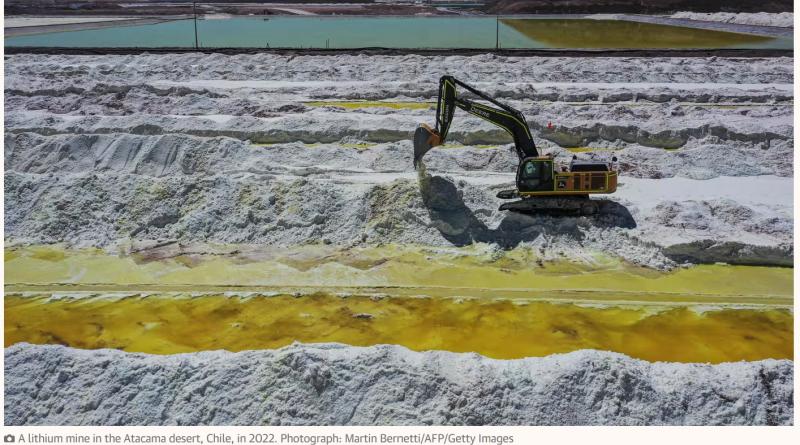The ugly truth behind ChatGPT: AI is guzzling resources at planet-eating rates

When you picture the tech industry, you probably think of things that don’t exist in physical space, such as the apps and internet browser on your phone. But the infrastructure required to store all this information – the physical datacentres housed in business parks and city outskirts – consume massive amounts of energy. Despite its name, the infrastructure used by the “cloud” accounts for more global greenhouse emissions than commercial flights. In 2018, for instance, the 5bn YouTube hits for the viral song Despacito used the same amount of energy it would take to heat 40,000 US homes annually.
This is a hugely environmentally destructive side to the tech industry. While it has played a big role in reaching net zero, giving us smart meters and efficient solar, it’s critical that we turn the spotlight on its environmental footprint. Large language models such as ChatGPT are some of the most energy-guzzling technologies of all. Research suggests, for instance, that about 700,000 litres of water could have been used to cool the machines that trained ChatGPT-3 at Microsoft’s data facilities. It is hardly news that the tech bubble’s self-glorification has obscured the uglier sides of this industry, from its proclivity for tax avoidance to its invasion of privacy and exploitation of our attention span. The industry’s environmental impact is a key issue, yet the companies that produce such models have stayed remarkably quiet about the amount of energy they consume – probably because they don’t want to spark our concern.
Google’s global datacentre and Meta’s ambitious plans for a new AI Research SuperCluster (RSC) further underscore the industry’s energy-intensive nature, raising concerns that these facilities could significantly increase energy consumption. Additionally, as these companies aim to reduce their reliance on fossil fuels, they may opt to base their datacentres in regions with cheaper electricity, such as the southern US, potentially exacerbating water consumption issues in drier parts of the world. Before making big announcements, tech companies should be transparent about the resource use required for their expansion plans.
Furthermore, while minerals such as lithium and cobalt are most commonly associated with batteries in the motor sector, they are also crucial for the batteries used in datacentres. The extraction process often involves significant water usage and can lead to pollution, undermining water security. The extraction of these minerals are also often linked to human rights violations and poor labour standards. Trying to achieve one climate goal of limiting our dependence on fossil fuels can compromise another goal, of ensuring everyone has a safe and accessible water supply.
Moreover, when significant energy resources are allocated to tech-related endeavours, it can lead to energy shortages for essential needs such as residential power supply. Recent data from the UK shows that the country’s outdated electricity network is holding back affordable housing projects. This will only get worse as households move away from using fossil fuels and rely more on electricity, putting even more pressure on the National Grid. In Bicester, for instance, plans to build 7,000 new homes were paused because the electricity network didn’t have enough capacity.
In an era where we expect businesses to do more than just make profits for their shareholders, governments need to evaluate the organisations they fund and partner with, based on whether their actions will result in concrete successes for people and the planet. In other words, policy needs to be designed not to pick sectors or technologies as “winners”, but to pick the willing by providing support that is conditional on companies moving in the right direction. Making disclosure of environmental practices and impacts a condition for government support could ensure greater transparency and accountability. Similar measures could promote corporate accountability in global mineral supply chains, enforcing greater human rights compliance.
In navigating the intersection of technological advancement and environmental sustainability, policymakers are facing the challenge of cultivating less extractive business models. This is not just about adopting a piecemeal approach; it’s about taking a comprehensive systematic view, empowering governments to build the needed planning and implementation capacity. Such an approach should eschew outdated top-down methods in favour of flexible strategies that integrate knowledge at all levels, from local to global. Only by adopting a holistic perspective can we effectively mitigate the significant environmental impacts of the tech industry.
Ultimately, despite the unprecedented wave of innovation since the 1990s, we have consistently overlooked the repercussions of these advances on the climate crisis. As climate scientists anticipate that global heating will exceed the 1.5C target, it’s time we approach today’s grand challenges systemically, so that the solution to one problem does not exacerbate another.





